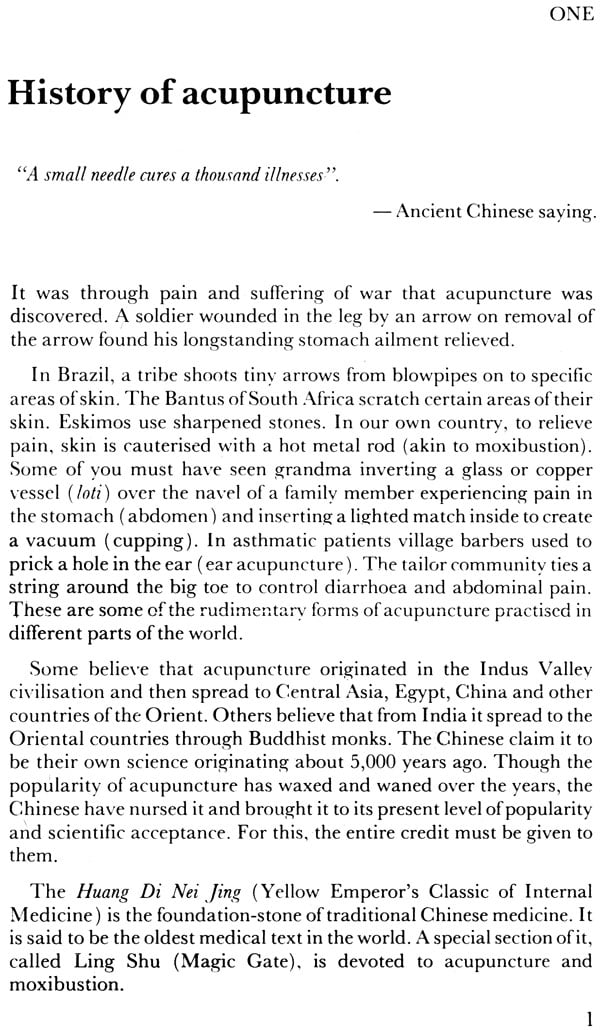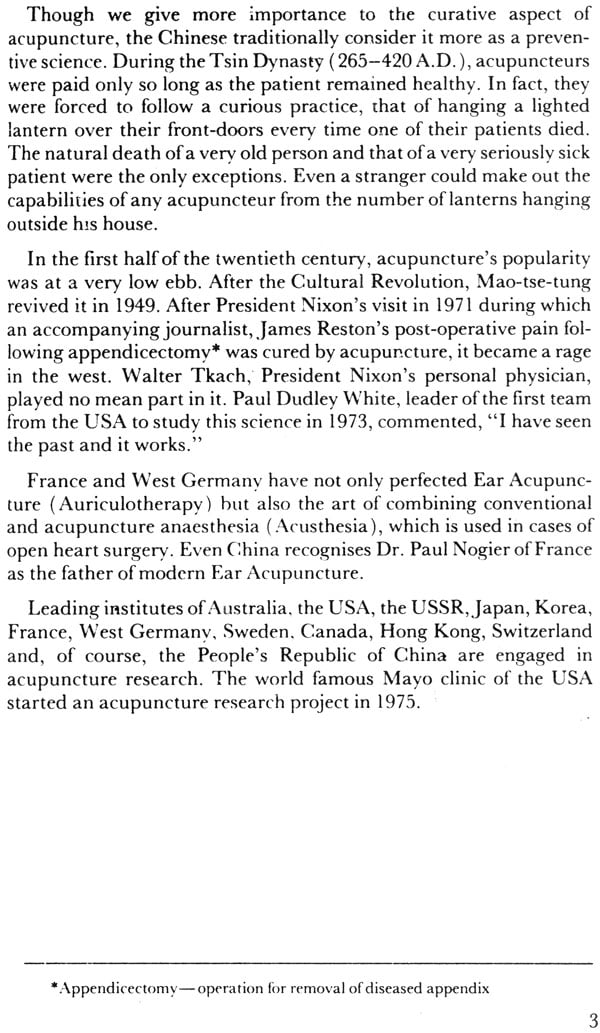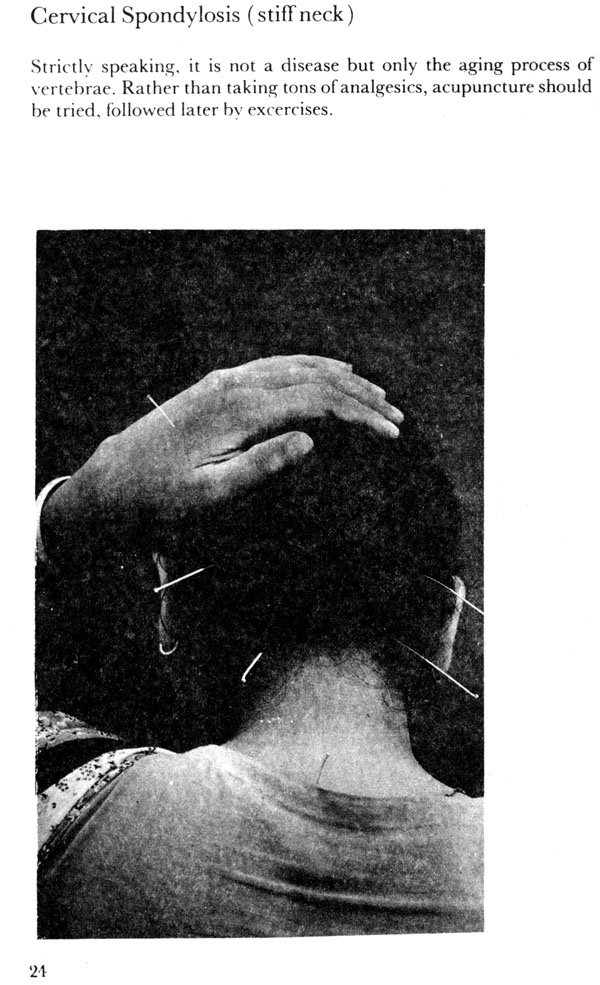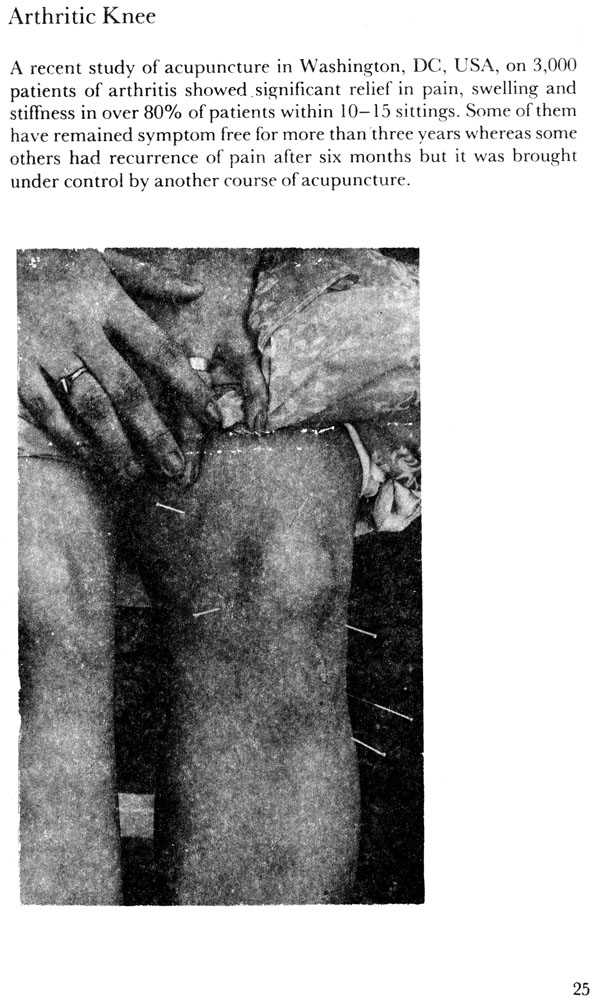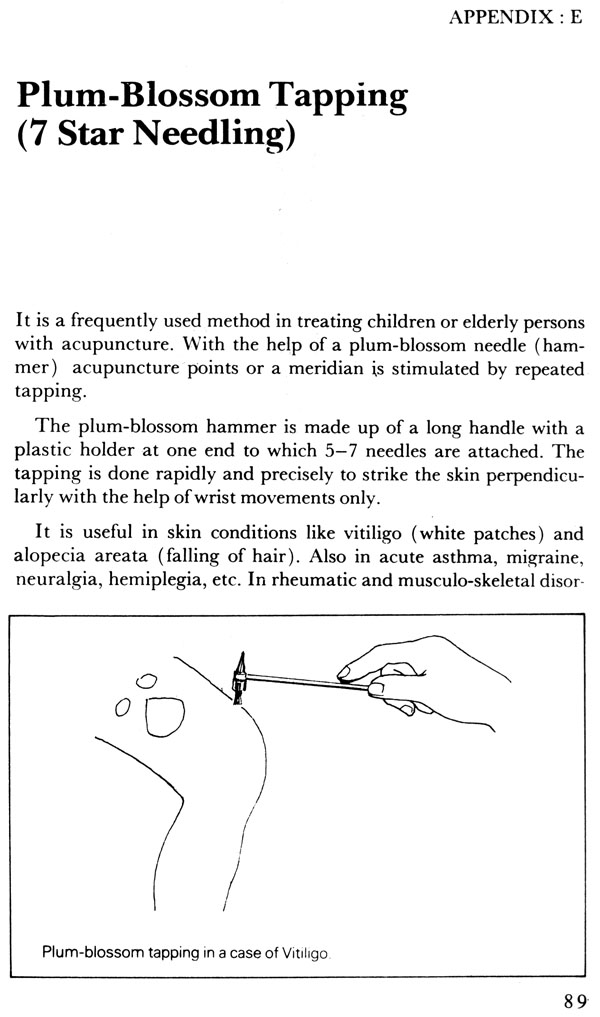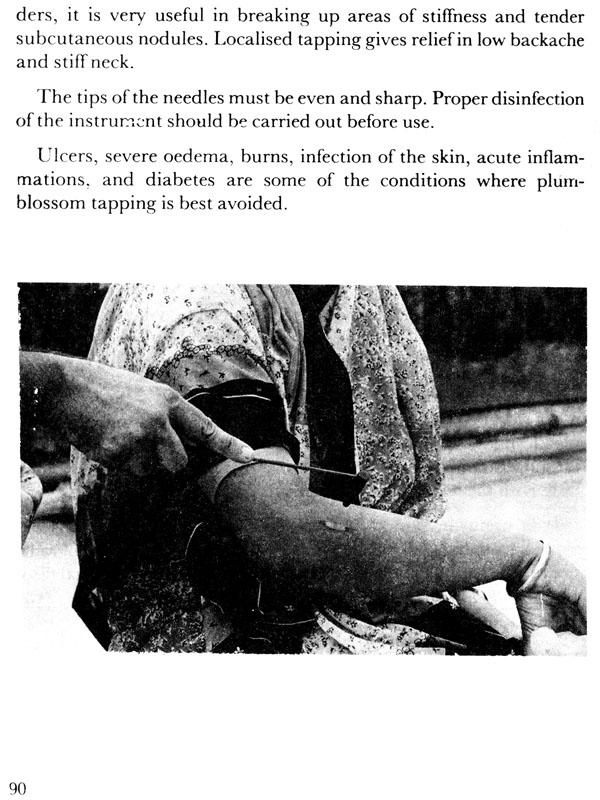
Speaking of Acupuncture: A Practical Guide that Offers Useful Insights into Acupunture Techniques
Book Specification
| Item Code: | IDE231 |
| Author: | Nilesh Baxi and C.H. Asrani |
| Publisher: | Sterling Paperbacks |
| Language: | English |
| Edition: | 2010 |
| ISBN: | 9788120717749 |
| Pages: | 111 (B & W Illus: 19, Figures: 25) |
| Cover: | Paperback |
| weght of book 138 gms | |
| Other Details | 8.6" X 5.6" |
| Weight | 140 gm |
Book Description
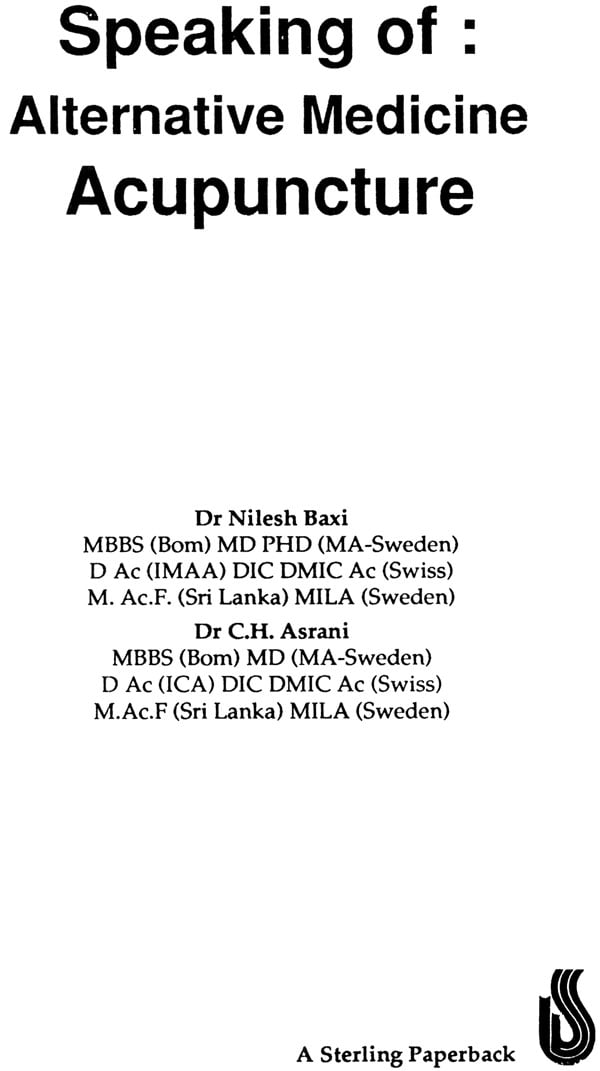
From the Jacket:
Acupuncture has an important place in this day and age when people are turning to alternative sources of medicine. It is an ancient Chinese method of alleviating pain and treating a variety of diseases by inserting needless into various parts of the body. The Chinese believed that a disease occurred because of an imbalance between two principle forces of nature. Acupuncture restores this balance.
This informative book will open out to you new vistas of therapy.
Dr Nilesh Baxi and Dr C.H. Asrani have paid me the compliment of asking me to write a Foreword to their book Alternative Medicine: Acupuncture.
I do not know much about Acupuncture and even less about Magneto Therapy. But as a social worker and Chairman of the Bhatia General Hospital, I have always felt that any therapy which cures my patients or gives them relief is good enough for me. Being a business man I feel that what I need in my industry is a man who can give me maximum production with least wastage. What qualifications he has got from an academic point of view do not interest me at all. In other words, the man who gives me better production with less wastage would be my production manager- not the man who has got four lines of academic qualification's but not the ability to get the best out of the people working with and under him.
The same applies to doctors and various "pathics". What is the use of a doctor who displavs on his letterhead many lines of academic qualifications- some of them having been obtained by paying the required fees only- and not able to cure or give relief to my patients? On the other hand, there are very ordinary doctors who have the ability to diagnose most accuratelv the disease, treat it effectively and ultimately cure the patient. That is the doctor I want and that is the "pathy" I would introduce in the Bhatia General Hospital without the slightest hesitation.
Acupuncture is very much coming into its own but not much is known about it so far as the lavman is concerned. Even less is known about Magneto Therapy. To fill this void, Dr Baxi and Dr Asrani have made an effort. If they succeed in making the general public aware of these two "pathies" and cure or give relief to the patient. their effort will have borne fruit. I know it is a specialized treatment but, if administered on a large scale, it can be made available to the public at a reasonable cost. If also a chart is maintained of the patients who have been cured therefrom - as also of the patients who have derived great relief from it-in due course of time, I am sure, it will gain ground to an extent which will more than satisfy the two good doctors.
I wish them every possible success in their efforts to help Acupunc- ture and Magneto Therapy to occupy a prominent and permanent place in the treatment of various diseases which affiict the human body.
This short introduction to acupuncture is intended to awaken wider interest among the common man and the medical profession, as also to provide a clear understanding of this ancient method of healing.
Twenty years ago, very few acupuncturists existed outside the Orient. Today they have proliferated throughout the world. Countries like the USSR, Australia,Japan, West Germany, France, Switzerland, Sri Lanka, etc., have accorded official status to this science whereas Canada, Japan, the USA, the UK, Australia, Swe- den, etc., are engaged in research to unravel the scientific basis of this art. In the People's Republic of China and in the rest of the Orient. this 5,000 years old healing art is practised by over 7,50,000 acupuncteurs.
Though more and more General Practitioners are taking to this therapy and acupuncture departments are being opened by an in- creasing number of hospitals, including government hospitals, medi- cal establishments in our country regard it as a form of quackery and specialists tend to dismiss it. They judge all alternative medical sciences according to western medical parameters, putting aside the dictum, "Relief to the patient through any effective medium". Luckily, explanations regarding the effects of acupuncture have started coming from western medical researchers; hence. acceptance of not only acupuncture but also other healing methods may not be too far away.
This book may also correct those false beliefs and exaggerated presentations which have arisen due to sweeping claims. Acupunc- ture is not a cure-all but a possibility among other possibilities to help the sick. I t should not replace any medical science but complement it. For cases resisting response to various healing methods, acupuncture is an effective means of relief/cure.
I t is a tremendous advantage of acupuncture that it is relatively easy to teach to Family Physicians and even paramedicals who can function under the supervision of an accomplished acupuncteur. The World Health Organisation (WHO) has closely looked into the spectacular success of acupuncture and has not only accepted it as a recognised mode of therapy but also recommended it for extensive use by the third world countries.
Like homoeopathy, acupuncture is a holistic medicine, i.e., it does not consider any symptoms or disease in isolation but takes the whole body into account.
Members of the medical fraternity interested in knowing more about acupuncture, including the cases cited in the book, may contact the authors.
| Foreword | v | |
| Preface | viii | |
| 1. | History of Acupuncture | 1 |
| 2. | What? How? When? Acupuncture | 5 |
| 3. | CUN - a unit of measurement | 11 |
| 4. | Chi (Qi) or Life Energy | 13 |
| 5. | Meridians (channels) & Zang-Fu organs | 15 |
| 6. | Treatment of some important conditions - I | 23 |
| 7. | Chinese Pulse Diagnosis | 27 |
| 8. | Five Element Theory | 31 |
| 9. | Organ Clock | 37 |
| 10. | Effects of Acupuncture | 41 |
| 11. | Materials of Acupuncture | 45 |
| 12. | Ear Acupuncture (Auriculotherapy) | 49 |
| 13. | Scalp Acupuncture (Head-needle therapy) | 53 |
| 14. | Electro-Acupuncture | 59 |
| 15. | Use of Laser in Acupuncture | 63 |
| 16. | Contra-indications & Complications | 65 |
| 17. | Treatment of some Important Conditions - II | 69 |
| Appendices | ||
| A. | Moxibustion | 75 |
| B. | Cupping | 79 |
| C. | Acupressure | 81 |
| D. | Reflexology or Zone Therapy | 87 |
| E. | Plum-blossom Tapping (7-star needling) | 89 |
| F. | In Patient's own words | 91 |
| G. | New Vistas | 93 |
| H. | Future Plan | 94 |
| Glossary | 97 | |
| Bibliography | 99 | |
